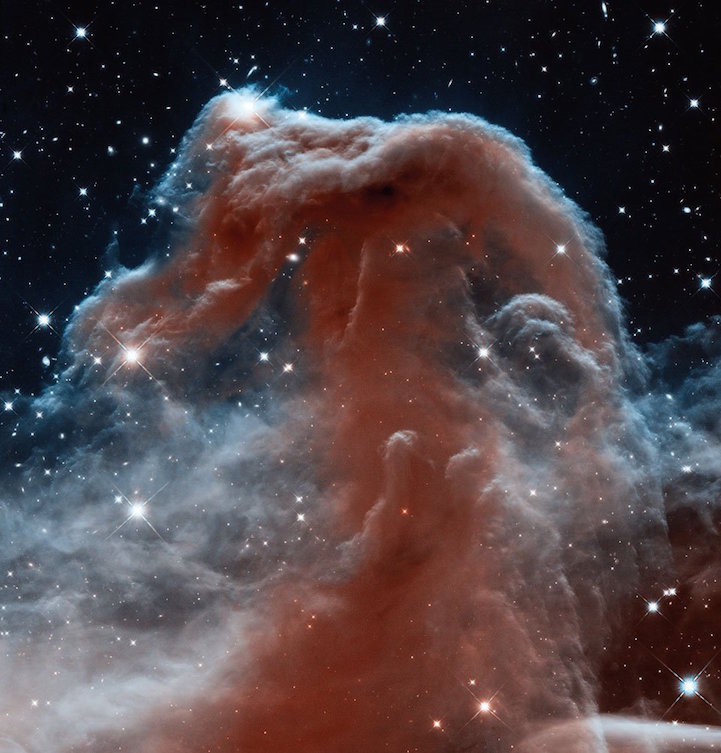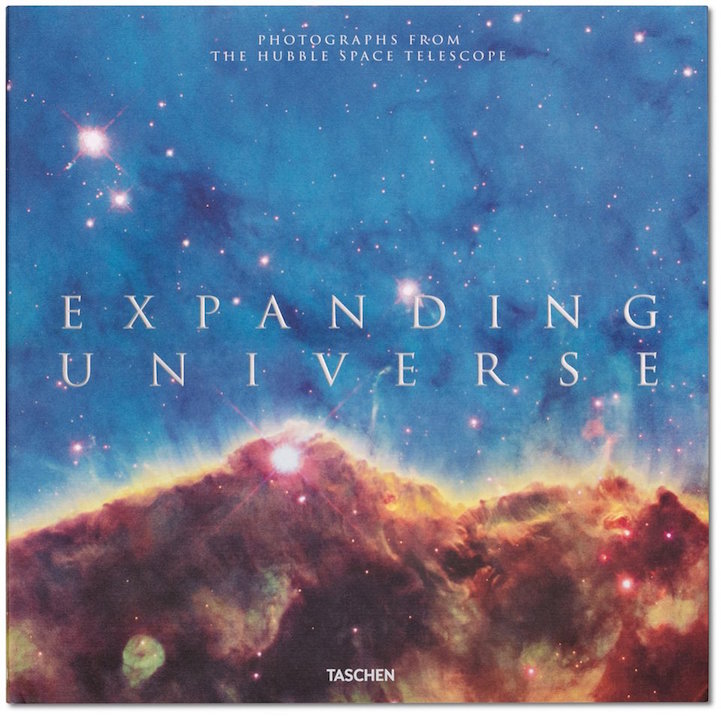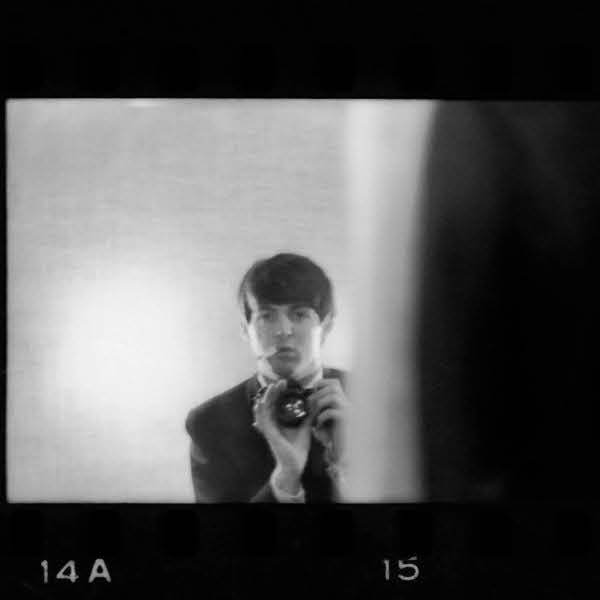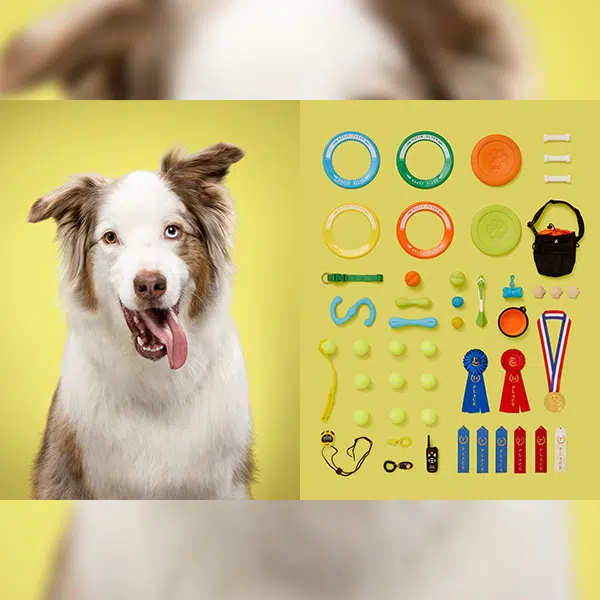In early April, publisher Taschen will be releasing a new book that collects the most breathtaking images of deep space taken by the Hubble Space Telescope. It's been 25 years since Hubble first launched into low-earth orbit and it remains operational today. It can take extremely high-resolution images with negligible background light, and hence, has recorded some of the most detailed visible-light images ever, giving us an unprecedented view of space.
The book, called Expanding Universe. Photographs from the Hubble Space Telescope, is not just a collection of mesmerizing images, it's also a way to learn more about Hubble's contribution to space. Famed photography critic Owen Edwards provides an essay and there is an interview with Zoltan Levay, Imaging Lead at the Space Telescope Science Institute, who explains how the photos were composed. Veteran Hubble astronauts Charles F. Bolden, Jr. and John Mace Grunsfeld provide insight on Hubble's legacy and its role in future space exploration.
The 260 page hardcover book's release coincides with the Hubble's 25th anniversary. Hubble stands today as one of NASA's most successful and long-lasting scientific missions. It's beamed hundreds of thousands of images back to Earth, shedding light on many of the great mysteries of astronomy. Among its many discoveries, Hubble has helped determine the age of the universe, it played a key role in the discovery of dark energy, and it has shown scientists galaxies in all stages of evolution.
Expanding Universe. Photographs from the Hubble Space Telescope will be available in stores in about three weeks. It is available for pre-order on Taschen's website. Now, courtesy of the book publisher, here's a special sneak peek of what you'll find inside.
Above: Barnard 33 Horsehead Nebula, classification: Dark Nebula, position: 05h 40m, –02, 27′ (Orion), distance from earth: 1,600 ly, instrument/year: WFC3/IR, 2012
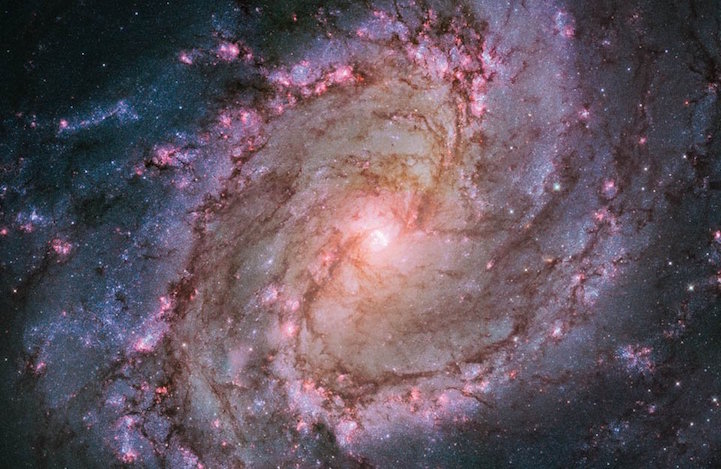 M83 Southern Pinwheel Galaxy, classification: Barred Spiral Galaxy, position: 13h 37m, –29, 51′ (Hydra), distance from earth: 15,000,000 ly, instrument/year: WFC3/UVIS, 2009–2012
M83 Southern Pinwheel Galaxy, classification: Barred Spiral Galaxy, position: 13h 37m, –29, 51′ (Hydra), distance from earth: 15,000,000 ly, instrument/year: WFC3/UVIS, 2009–2012
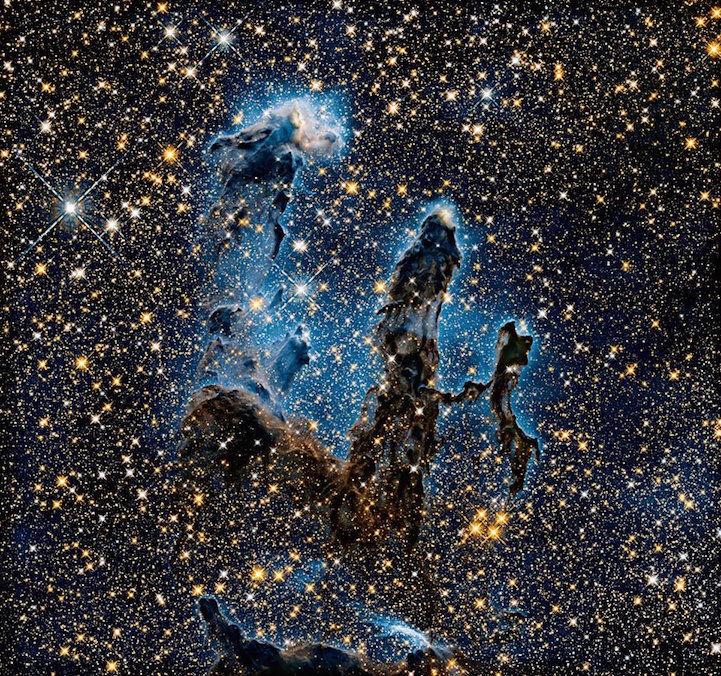 M16 Eagle Nebula, classification: Star-forming Nebula, position: 18h 18m, –13, 49′ (Serpens), distance from earth: 6,500 ly, instrument/year: WFC3/IR, 2014
M16 Eagle Nebula, classification: Star-forming Nebula, position: 18h 18m, –13, 49′ (Serpens), distance from earth: 6,500 ly, instrument/year: WFC3/IR, 2014
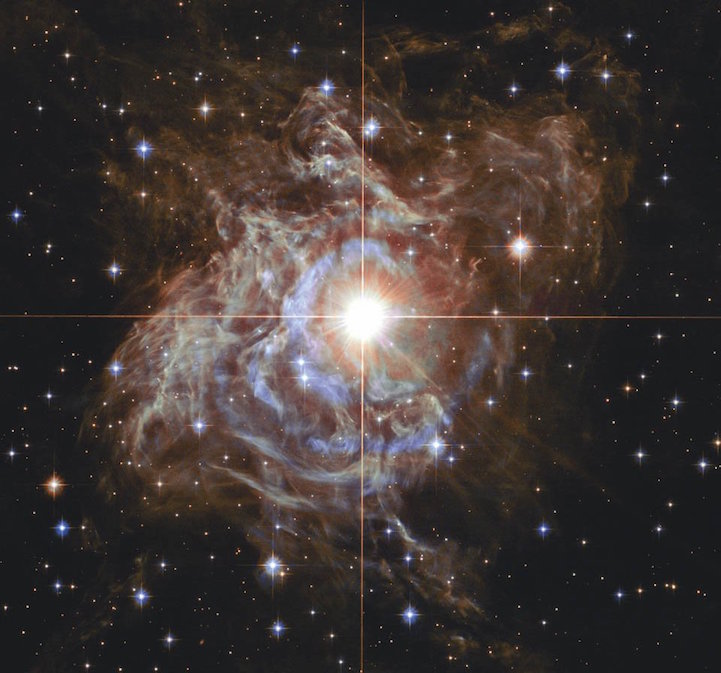 RS Puppis, classification: Variable Star, Nebula, position: 08h 13m, –34, 34′ (Puppis), distance from earth: 6,500 ly, instrument/year: ACS/WFC, 2010
RS Puppis, classification: Variable Star, Nebula, position: 08h 13m, –34, 34′ (Puppis), distance from earth: 6,500 ly, instrument/year: ACS/WFC, 2010
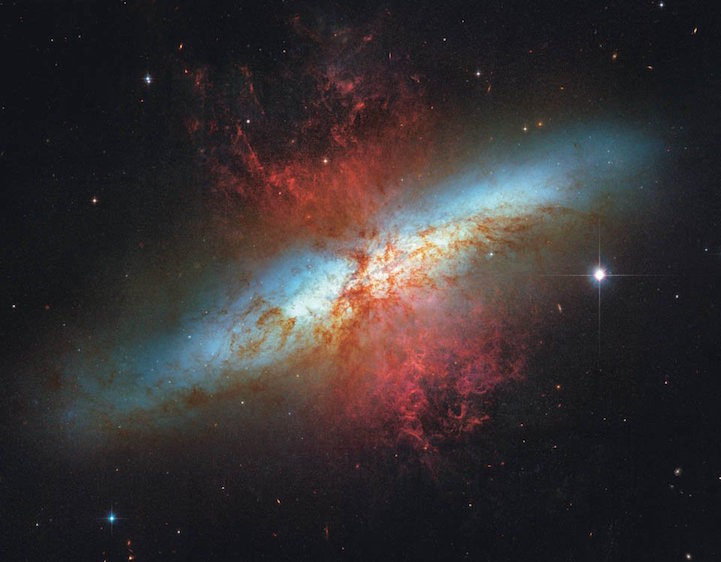 M82 Cigar Galaxy, classification: Galaxy, position: 09h 55m, +69 40′ (Ursa Major), distance from earth: 12,000,000 ly, instrument/year: ACS/WFC, 2006
M82 Cigar Galaxy, classification: Galaxy, position: 09h 55m, +69 40′ (Ursa Major), distance from earth: 12,000,000 ly, instrument/year: ACS/WFC, 2006
 M16 Eagle Nebula, classification: Star-forming Nebula, position: 18h 18m, –13, 49′ (Serpens). distance from earth: 6,500 ly, instrument/year: WFC3/UVIS, 2014
M16 Eagle Nebula, classification: Star-forming Nebula, position: 18h 18m, –13, 49′ (Serpens). distance from earth: 6,500 ly, instrument/year: WFC3/UVIS, 2014
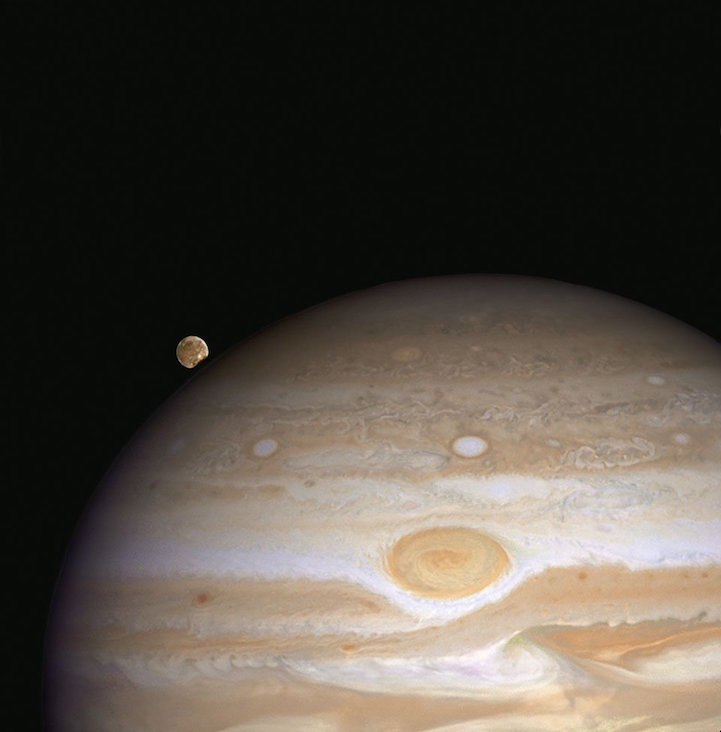 Jupiter & Ganymede, classification: Planet & Moon, position: Variable, distance from earth: 443,000,000 mi, instrument/year: WFPC2, 2007
Jupiter & Ganymede, classification: Planet & Moon, position: Variable, distance from earth: 443,000,000 mi, instrument/year: WFPC2, 2007
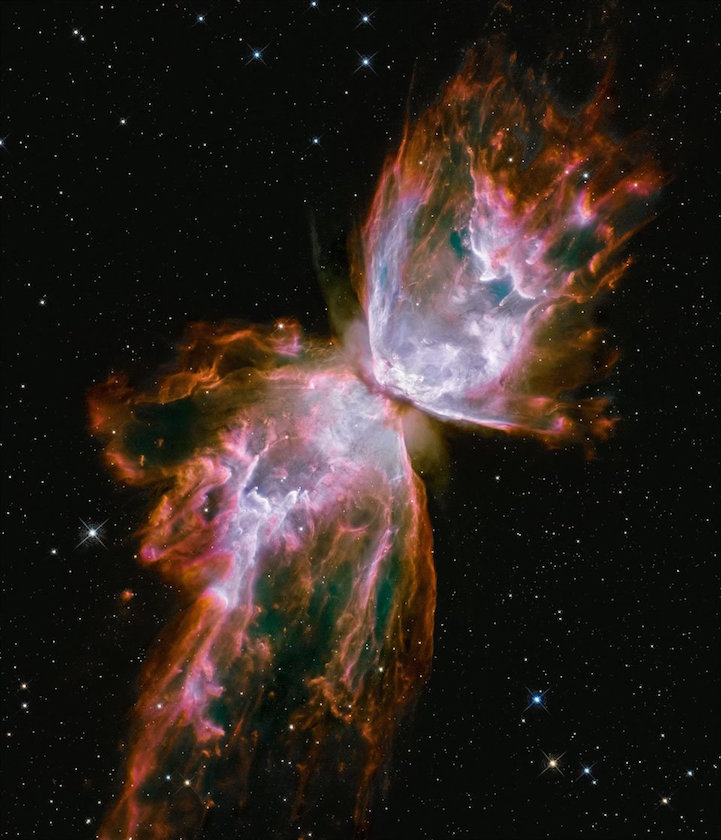 Sharpless 2-106 Snow Angel, classification: Nebula, position: 20h 27m, +37, 22′ (Cygnus), distance from earth: 2,000 ly, instrument/year: Subaru, Telescope, 1999; WFC3/UVIS, WFC3/IR, 2011
Sharpless 2-106 Snow Angel, classification: Nebula, position: 20h 27m, +37, 22′ (Cygnus), distance from earth: 2,000 ly, instrument/year: Subaru, Telescope, 1999; WFC3/UVIS, WFC3/IR, 2011
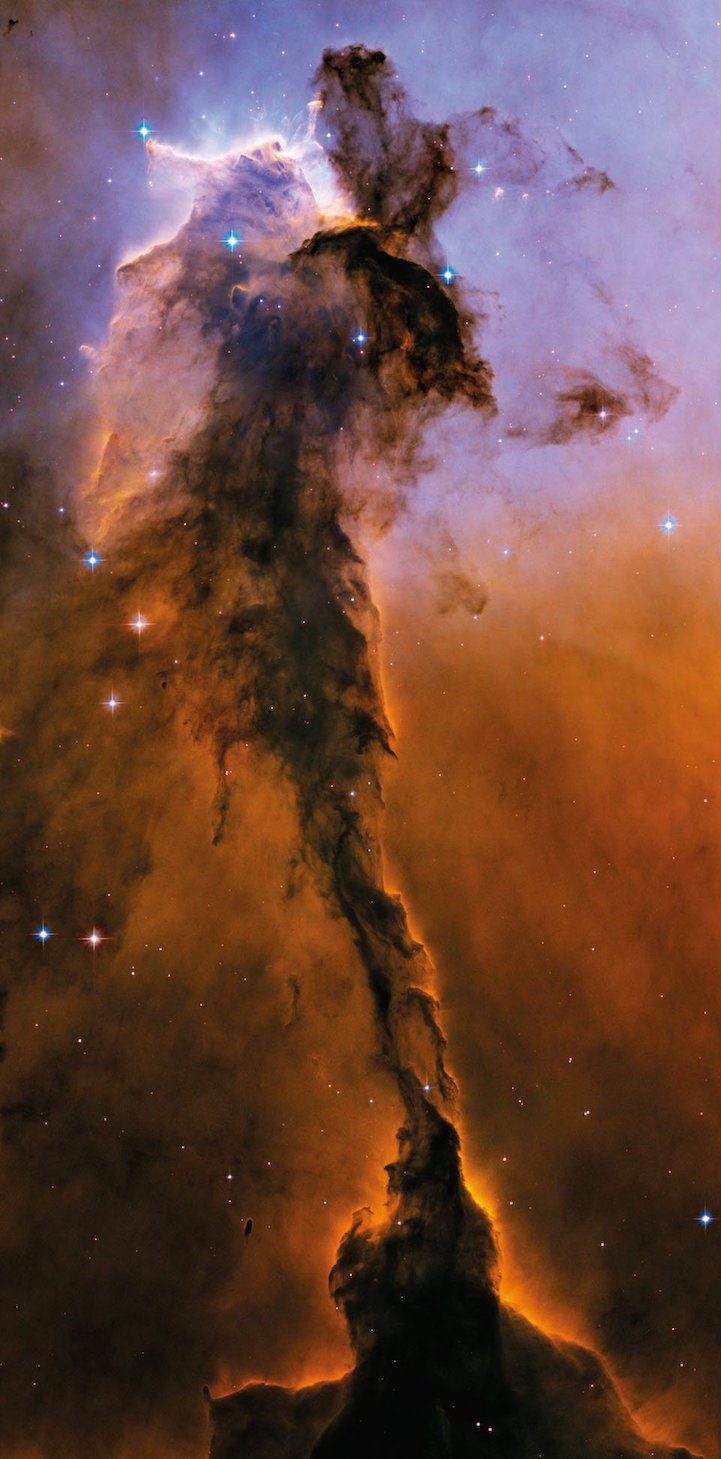 M16 Eagle Nebula, classification: Star-forming Nebula, position: 18h 18m, –13, 49′ (Serpens), distance from earth: 6,500 ly, instrument/year: ACS/WFC, 2004
M16 Eagle Nebula, classification: Star-forming Nebula, position: 18h 18m, –13, 49′ (Serpens), distance from earth: 6,500 ly, instrument/year: ACS/WFC, 2004
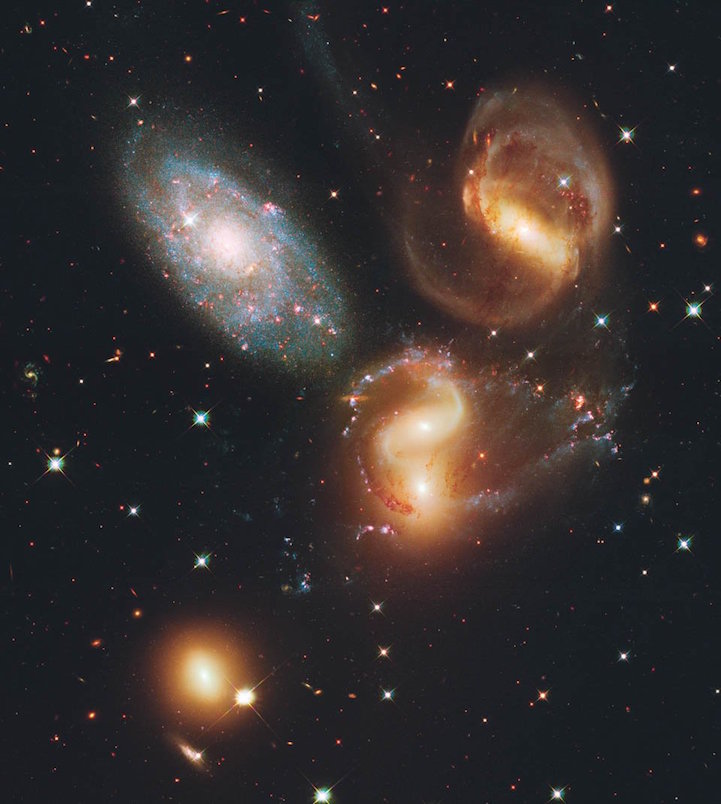 HCG 92 Stephan's Quintet, classification: Galaxy Group, position: 22h 35m, +33, 57′ (Pegasus), distance from earth: 290,000,000 ly, instrument/year: WFC3/UVIS, 2009
HCG 92 Stephan's Quintet, classification: Galaxy Group, position: 22h 35m, +33, 57′ (Pegasus), distance from earth: 290,000,000 ly, instrument/year: WFC3/UVIS, 2009
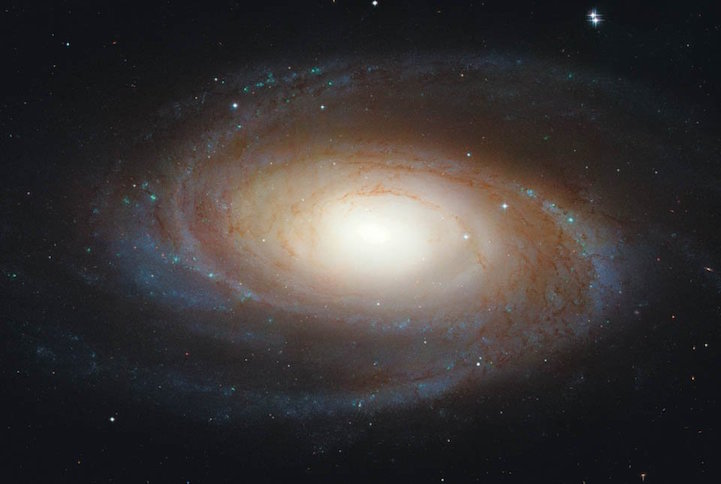 M81, NGC 3031, classification: Spiral Galaxy, position: 09h 55m, +69 03′ (Ursa Major), distance from earth: 11,600,000 ly, instrument/year: ACS/WFC, 2004-2006
M81, NGC 3031, classification: Spiral Galaxy, position: 09h 55m, +69 03′ (Ursa Major), distance from earth: 11,600,000 ly, instrument/year: ACS/WFC, 2004-2006
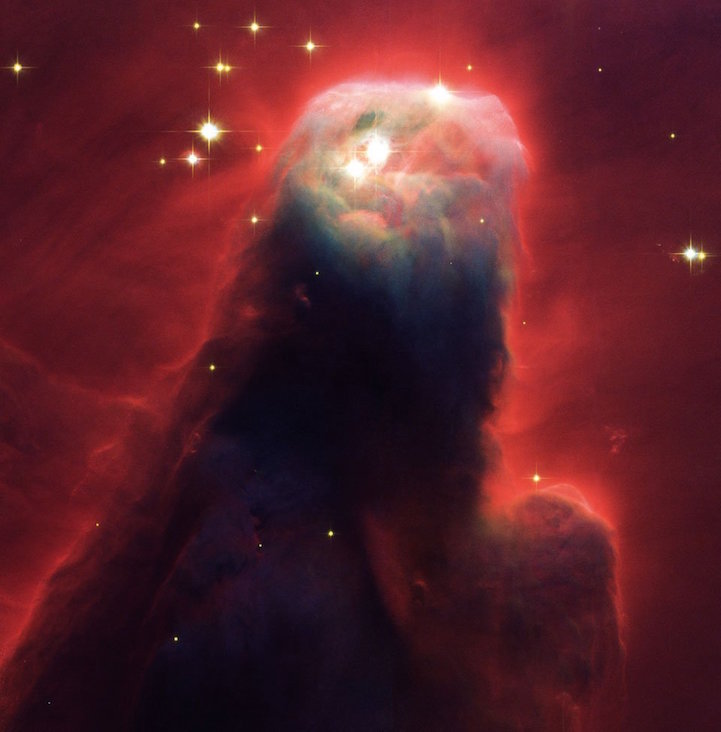 NGC 2264 Cone Nebula, classification: Star-forming Nebula, position: 06h 41m, +09, 25′ (Monoceros), distance from earth: 2,500 ly, instrument/year: ACS/WFC, 2002
NGC 2264 Cone Nebula, classification: Star-forming Nebula, position: 06h 41m, +09, 25′ (Monoceros), distance from earth: 2,500 ly, instrument/year: ACS/WFC, 2002
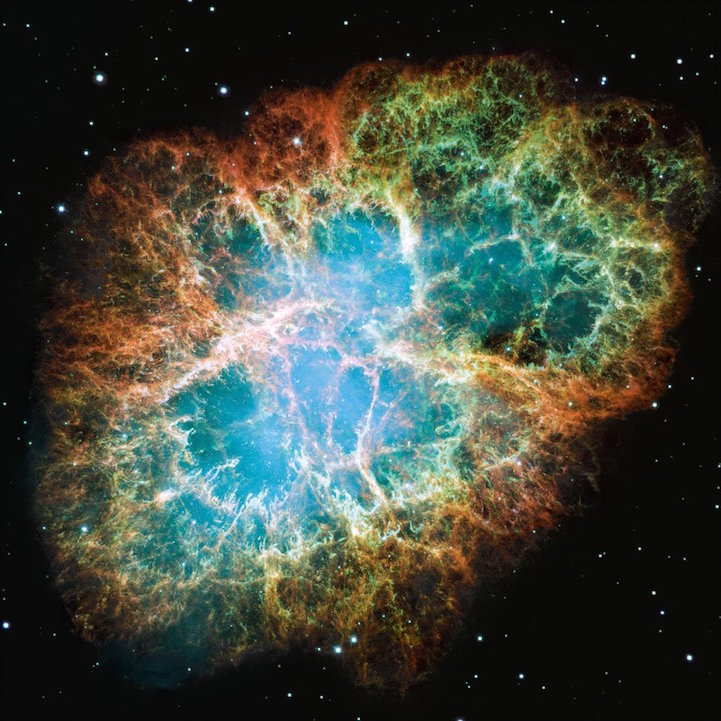 M1 Crab Nebula, classification: Supernova, Remnant, position: 05h 34m, +22, 00′ (Taurus), distance from earth: 6,500 ly, instrument/year: WFPC2, 1999, 2000
M1 Crab Nebula, classification: Supernova, Remnant, position: 05h 34m, +22, 00′ (Taurus), distance from earth: 6,500 ly, instrument/year: WFPC2, 1999, 2000
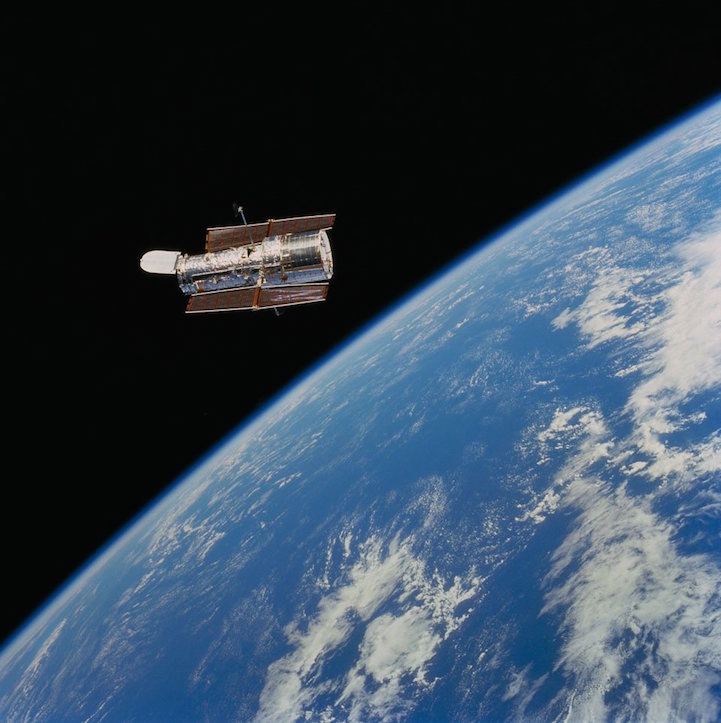 HST The Hubble Space Telescope, classification: Cassegrain, Telescope, position: Earth's Orbit, distance from earth: 350 mi, instrument/year: Photo by Space Shuttle Crew, 1999
HST The Hubble Space Telescope, classification: Cassegrain, Telescope, position: Earth's Orbit, distance from earth: 350 mi, instrument/year: Photo by Space Shuttle Crew, 1999
